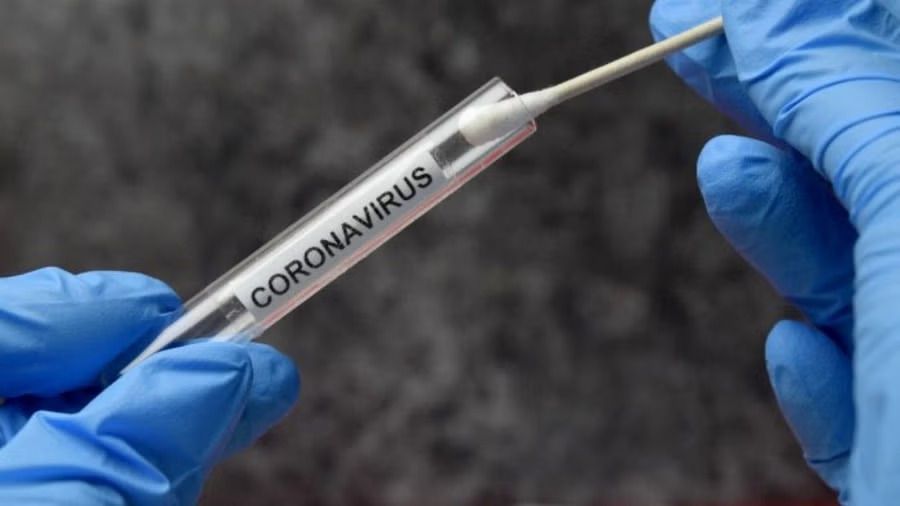As the world grapples with periodic resurgences of COVID-19, Tamil Nadu is witnessing a fresh spike in cases, with 18 new infections reported as of May 18, 2025. The state’s Health Department, led by Director of Public Health and Preventive Medicine Dr. T.S. Selvavinayagam, has reassured residents that there is no cause for alarm, emphasizing the milder nature of the current strain and the robustness of Tamil Nadu’s health infrastructure. This uptick, linked to the KP.2 sub-variant of Omicron, follows a similar wave in Singapore and Thailand, where cases have surged but hospitalizations remain low. With a history of effectively managing past COVID waves through aggressive testing, contact tracing, and infrastructure upgrades, Tamil Nadu is leveraging its experience to contain the spread while urging the public to adhere to preventive measures like mask-wearing and vaccination. This blog explores the state’s response, the context of the current wave, and the measures ensuring public safety.
The Current Wave: A Milder Threat
On May 18, 2025, Tamil Nadu reported 18 new COVID-19 cases, a notable increase after a period of near-zero active cases as of April 20, 2025. Dr. Selvavinayagam, addressing the media, clarified that the KP.2 sub-variant, driving the surge in Singapore, is less virulent than previous strains, with no significant hospital admissions reported in affected regions. He noted that the variant has been detected in parts of India, including Tamil Nadu, but emphasized that the state’s health system is well-equipped to handle any escalation. This reassurance comes in the wake of global concerns, as Singapore reported over 25,900 cases between May 5 and 11, 2025, prompting mask mandates in hospitals and nursing homes.
The Tamil Nadu Health Department has advised the public to remain calm, citing the state’s robust infrastructure, which includes 52 COVID-19 testing centers, one of the highest in India, and a network of government and private hospitals prepared for any surge. The state’s proactive approach draws on lessons from previous waves, particularly the second wave in 2021, when Tamil Nadu managed 1,52,389 active cases, including 35,153 in Chennai, without a collapse of its healthcare system. The current caseload, while concerning, is significantly lower, and officials are confident in their ability to prevent a crisis.
Tamil Nadu’s Robust Health Infrastructure
Tamil Nadu’s ability to handle COVID-19 surges stems from decades of investment in its public health system, which has been lauded by experts like Dr. Jayaprakash Muliyil for being “way ahead” of many other states. During the 2021 second wave, the state added 12,000 oxygen beds in a week, responding to a demand that reached 840 metric tons of oxygen daily. The government also established a War Room to coordinate oxygen supply, bed availability, and patient admissions, ensuring efficient resource allocation. By May 2021, Tamil Nadu had 28,548 vacant beds and 6,121 patients on oxygen support, demonstrating its capacity to manage high caseloads.
The state’s testing infrastructure is equally impressive. From just 2,726 samples tested on April 1, 2020, Tamil Nadu scaled up to over 2.16 lakh samples by May 8, 2020, achieving one of the highest testing rates per million population in India. This aggressive testing strategy, refined after the 2009 H1N1 outbreak, allowed the state to identify and isolate cases early, preventing widespread transmission. Currently, the Health Department is conducting saturation testing of close contacts and has increased RT-PCR tests in Chennai from 22,000 to 25,000 daily, a measure reintroduced in December 2021 when cases rose to 294 in a single day.
Vaccination remains a cornerstone of Tamil Nadu’s strategy. In June 2022, when daily cases climbed from under 100 to over 11,000, the government focused on ensuring first and second doses for eligible individuals. Public health expert Dr. K. Kolandasamy, former Director of Public Health, emphasized the importance of continuous monitoring through tests like C-Reactive Protein and Random Blood Sugar at Primary Health Centres (PHCs). The state’s 93% recovery rate in October 2020, when it recorded over 7 lakh cases, underscores the effectiveness of its combined approach of testing, tracing, and treatment.
Government Response: Proactive Measures and Public Guidance
Health Minister Ma Subramanian, addressing the state Assembly in April 2023, hinted at reintroducing mask mandates in public places if cases continued to rise beyond a certain threshold. As of May 2025, masks are mandatory in all government hospitals, a policy in place since April 1, 2023, and the public has been advised to wear masks voluntarily. Chief Minister M.K. Stalin reviewed the situation on March 21, 2025, directing the Health Department to enhance surveillance and contact tracing to curb the spread. The government has also urged eligible individuals to complete their vaccination schedules, emphasizing that unvaccinated populations are at higher risk.
The Greater Chennai Corporation (GCC), which oversees the state capital, has been proactive in managing urban outbreaks. During the 2021 surge, it operated 14 COVID Care Centres (CCCs) linked to five government hospitals and allowed private hospitals to establish CCCs in collaboration with hotels. This flexibility ensured that mild and moderate cases were treated without overwhelming hospitals. In December 2021, when Chennai reported 294 cases in a day, the GCC increased screening centers from 11 to 15 and reintroduced containment zones, with 507 of 39,537 streets reporting cases. These measures are being revisited to address the current uptick, particularly in Chennai and neighboring districts like Chengalpattu, Tiruvallur, and Kanchipuram.
Lessons from Past Waves
Tamil Nadu’s experience with COVID-19 dates back to March 7, 2020, when the state reported its first case. By April 2020, the state had 834 confirmed cases, with clusters linked to events like the Koyambedu Market and a religious conference in Delhi attended by Thai nationals. The state’s response evolved from testing only symptomatic patients with travel history to aggressive and targeted testing, a shift prompted by the Delhi and Koyambedu clusters. By October 2020, Tamil Nadu had recorded 7,00,193 cases but achieved a 93% recovery rate, with a positivity rate below 5% and a fatality rate of 1.5%, thanks to micro-level planning, fever camps, and door-to-door screening.
The second wave in May 2021 was the state’s most challenging, with a peak of 36,987 cases on May 13. Despite ICU and oxygen bed shortages in cities like Chennai, Coimbatore, and Madurai, the health system held firm, supported by infrastructure upgrades post the first wave. The government’s strategy of categorizing patients—severe cases in hospitals, moderate in health centers, mild in care centers, and asymptomatic in home quarantine—helped manage resources effectively. Epidemiologists projected 150,000 infections in Chennai by July 2021, but the state’s containment efforts kept fatalities and hospitalizations lower than expected.
Public Health Experts Weigh In
Dr. Kolandasamy, reflecting on the current wave, noted that pandemics transition to endemic phases with milder waves, as seen with KP.2. He advocated for continued mask-wearing, handwashing, and social distancing, alongside restricting activities in enclosed spaces. Dr. J. Amalorpavanathan, a former director at Madras Medical College, emphasized the importance of isolating symptomatic patients and quarantining asymptomatic ones, a strategy Tamil Nadu has followed since 2020. The state’s ability to adapt its approach—described as a “war” against an invisible enemy—has been key to its resilience.
The current wave’s milder nature aligns with global trends, as seen in Singapore, where hospitalizations remain low despite a surge. Dr. Selvavinayagam’s assurance that Tamil Nadu’s infrastructure can handle any scenario is supported by past successes, such as preventing black-market sales of Remdesivir in 2021 by setting up special counters in Chennai and other cities. The state’s focus on protecting vulnerable groups, like the elderly and pregnant women, through targeted testing and isolation, continues to guide its response.
Political and Social Context
The resurgence has sparked political discussions, with opposition leader Edappadi K. Palaniswami raising concerns in the Assembly in April 2023 about rising cases, prompting Subramanian’s response on mask mandates. The DMK government, under Chief Minister Stalin, has faced criticism in the past for delayed testing, particularly in early 2020, but its subsequent aggressive approach earned praise. Posts on social media platforms like X have echoed the Health Department’s call for calm, with users like @MuthaleefAbdul noting on May 18, 2025, that the current strain is less severe, urging adherence to preventive measures.
The state’s handling of the 2023 Human Metapneumovirus (HMPV) outbreak, where Subramanian reassured the public about low severity, mirrors its current approach to COVID-19. Tamil Nadu’s experience with natural disasters, like the flooding caused by Cyclone Michaung in December 2023, has also honed its crisis management capabilities, which are now being applied to the pandemic response.
Looking Ahead: Sustaining Resilience
As Tamil Nadu navigates this latest wave, the Health Department remains vigilant, with plans to scale up testing and vaccination drives if needed. The state’s 52 testing centers, extensive hospital network, and War Room infrastructure provide a strong foundation to manage the KP.2 sub-variant. The government’s call for voluntary mask-wearing and vaccination underscores the importance of public cooperation in preventing a larger outbreak, especially with the festival season and monsoon approaching, which could exacerbate transmission.
The NCW’s emphasis on protecting vulnerable populations and the NHRC’s focus on rehabilitation in other contexts highlight the need for a holistic approach, ensuring that marginalized groups have access to testing and care. Tamil Nadu’s track record of adapting to evolving challenges—whether through oxygen allocation, containment zones, or fever camps—positions it well to handle the current surge. However, sustained efforts to maintain low hospitalization rates and prevent clusters will be critical in the coming weeks.
For now, Tamil Nadu’s message is clear: there is no need to panic. With a robust health system, proactive governance, and a public accustomed to COVID protocols, the state is well-prepared to weather this wave while continuing to build resilience for the future.
Sponsored
FACTS Transcripts
Apply for a University document anywhere
https://www.factstranscript.com
Quick Transcripts for popular Universities, check your University name now and get started. We help you to get your transcript application online which is accepted for use of IRCC.
No DD, NO Paperwork. 100% Authentic, Reliable.
FACTS Transcripts Charges · Reviews · Assam Universities · Home · Know your University









